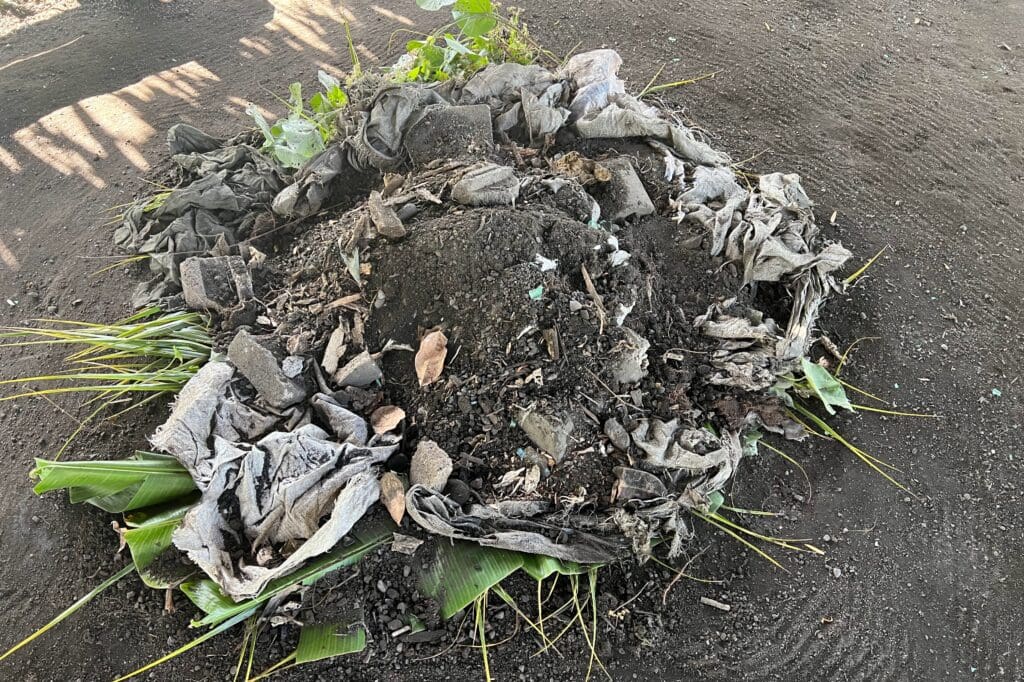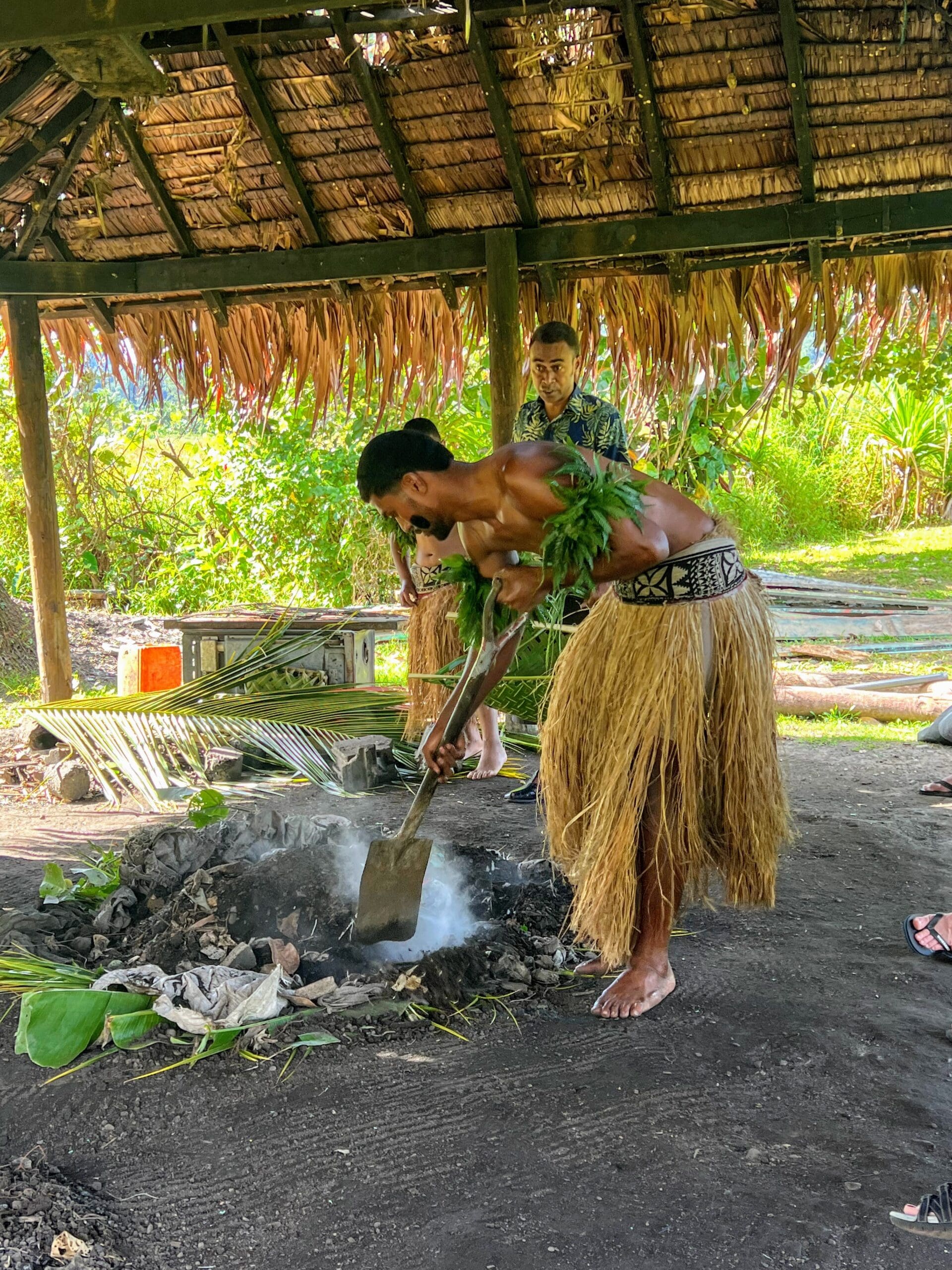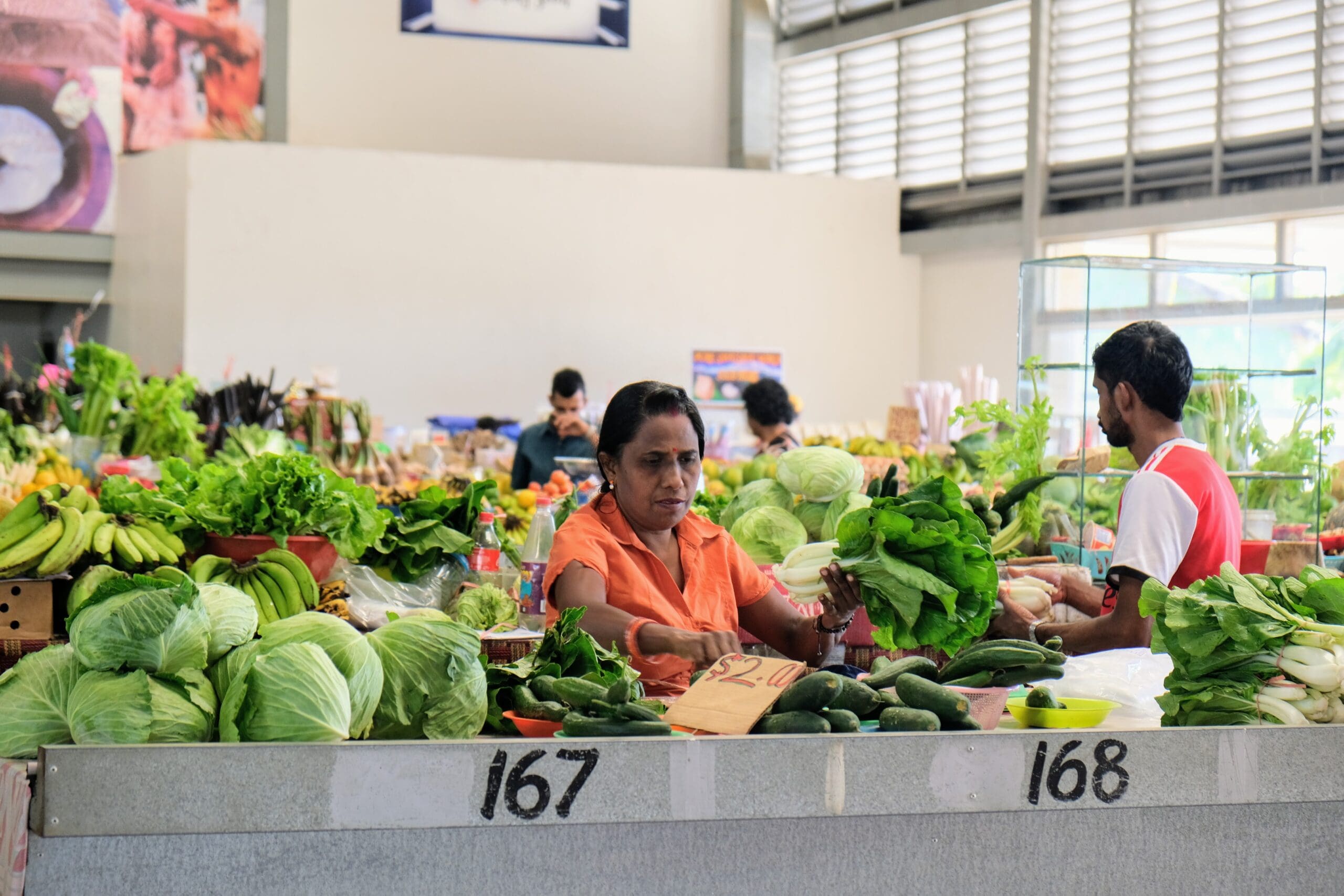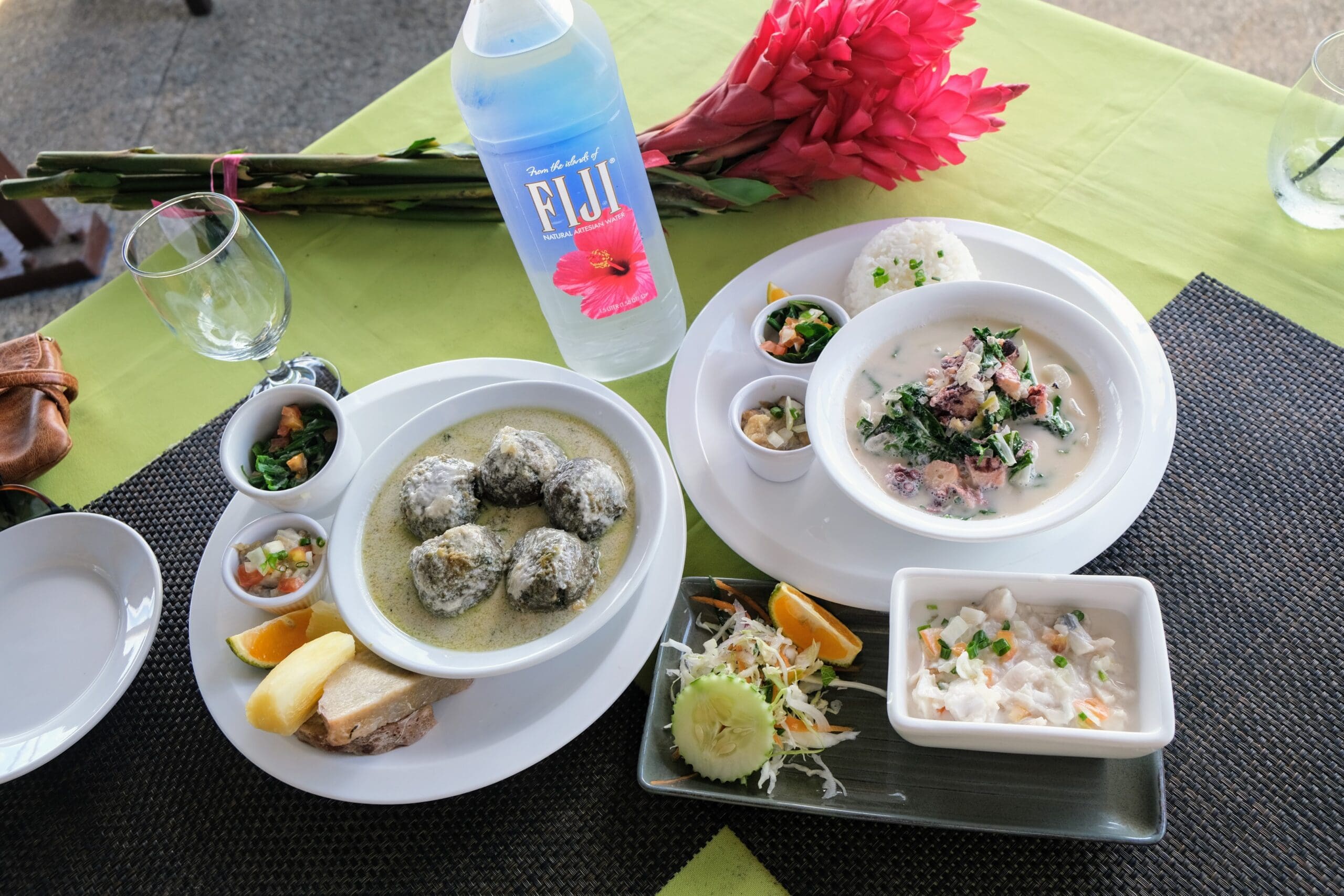While in Fiji, I got to experience and enjoy the incredible Fijian Lovo meal.
Fijian Lovo, Mari Hangi (New Zealand), Mexican Babaco, and Asian tandoor are all ancient cooking methods done by digging a pit in the ground, placing the wrapped food inside, and burying it in with fired wood. The trapped heat will cook the food inside.
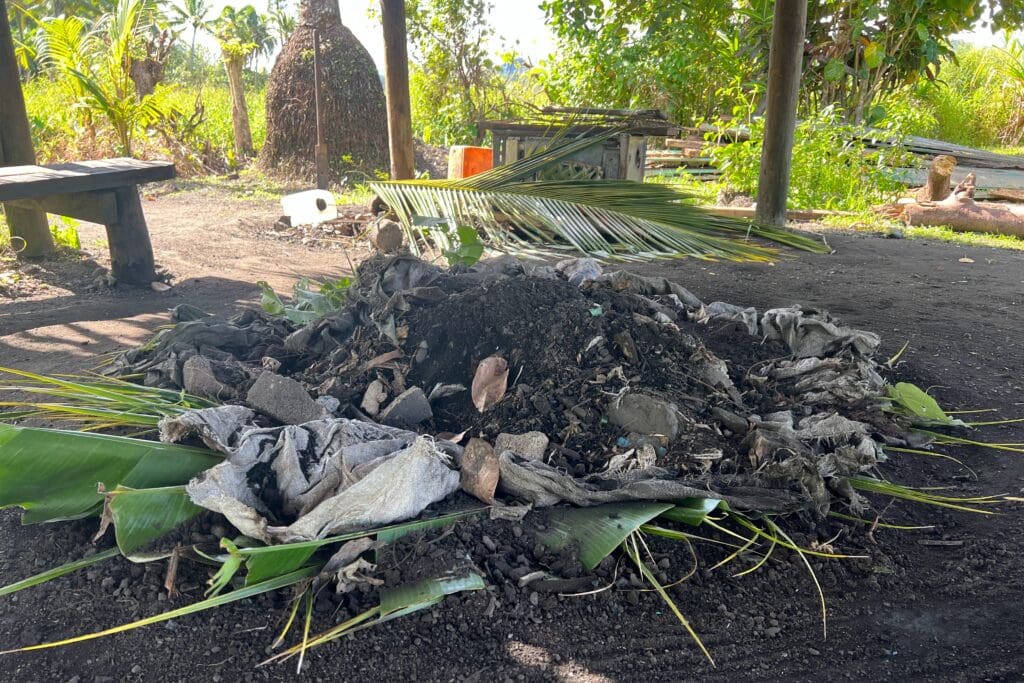
The food will be cooked within a few hours to more than half a day. It’s usually done in the junction of a ceremony, festival or some type of celebration – and made to feed a large number of people.
Though I have heard of this cooking method from Fafa, of Camel being cooked inside Arabian sand, it was an interesting experience to see in person.
Fijian Lovo Meal with Gratitude
There were seven whole chickens cooked on that day. Each was wrapped in alminum oil, which was then wrapped together in waved leaves that could easily carry two adults’ weight, let alone seven chickens.
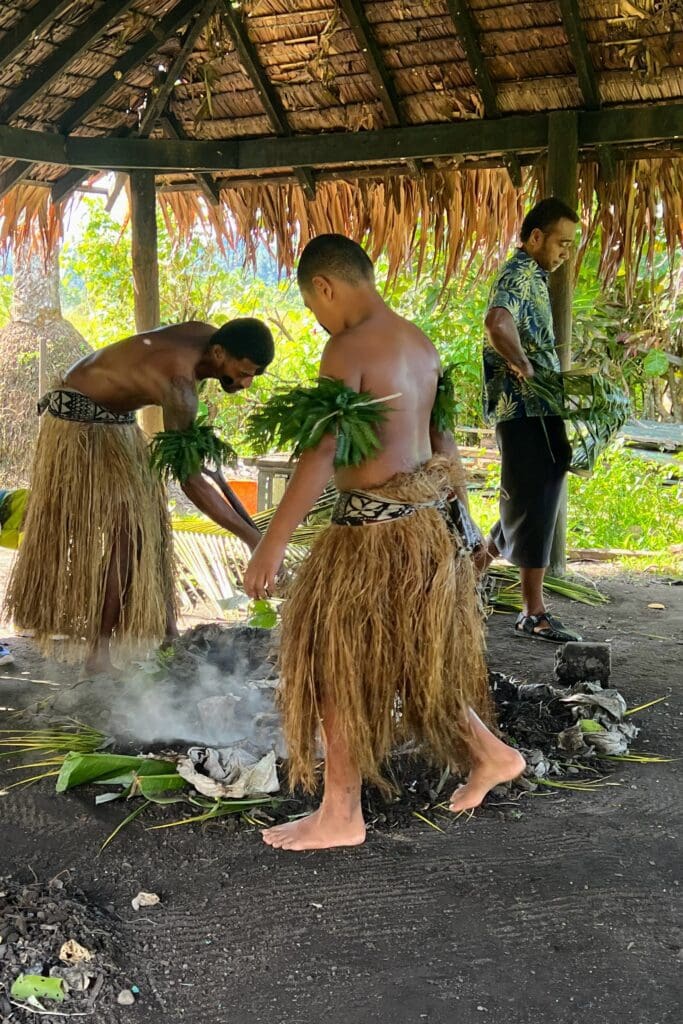
Once the smoke came out, the young Fijians moved the hot stone and wood aside to get into the wrapped food inside.
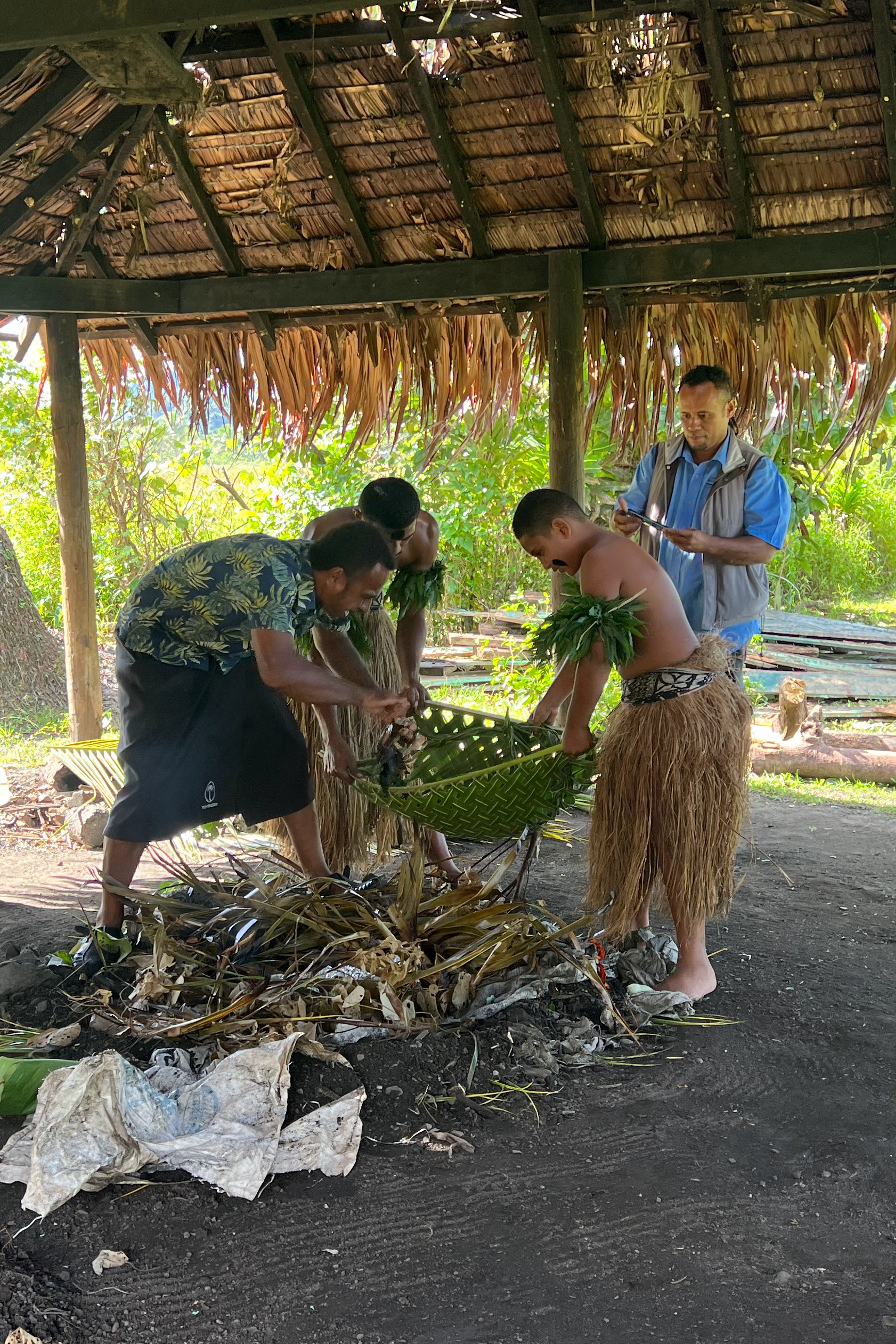
To see Nemani, Koromakawa Village representative, taking the pipping hot chicken one by one from the leaf basket with bare hands and clapping three times in between as a sense of gratitude to mother earth was fascinating and humbling at the same time.
Lunch Gathering in The Fijian Bure
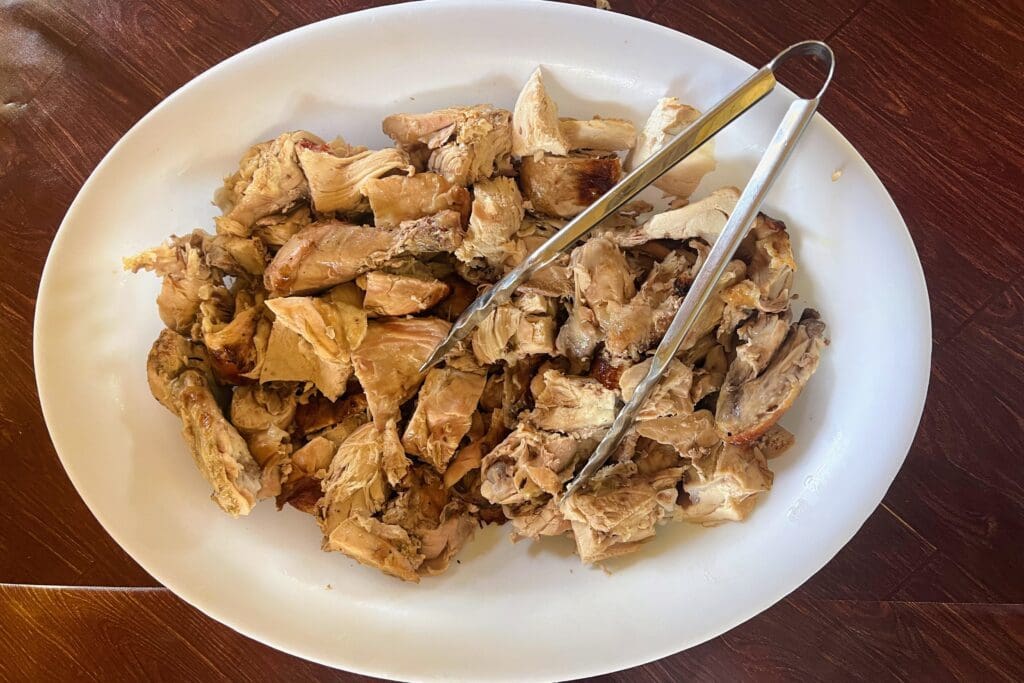
Ten minutes later, the meat was pulled into pieces and served as is.
We gathered inside the main Bure, Koromakawa Village’s community centre and sat at the long table for our meal. Then, we ate sitting down on the mat, like how we would eat Kalyano Sapadu at Indian weddings.
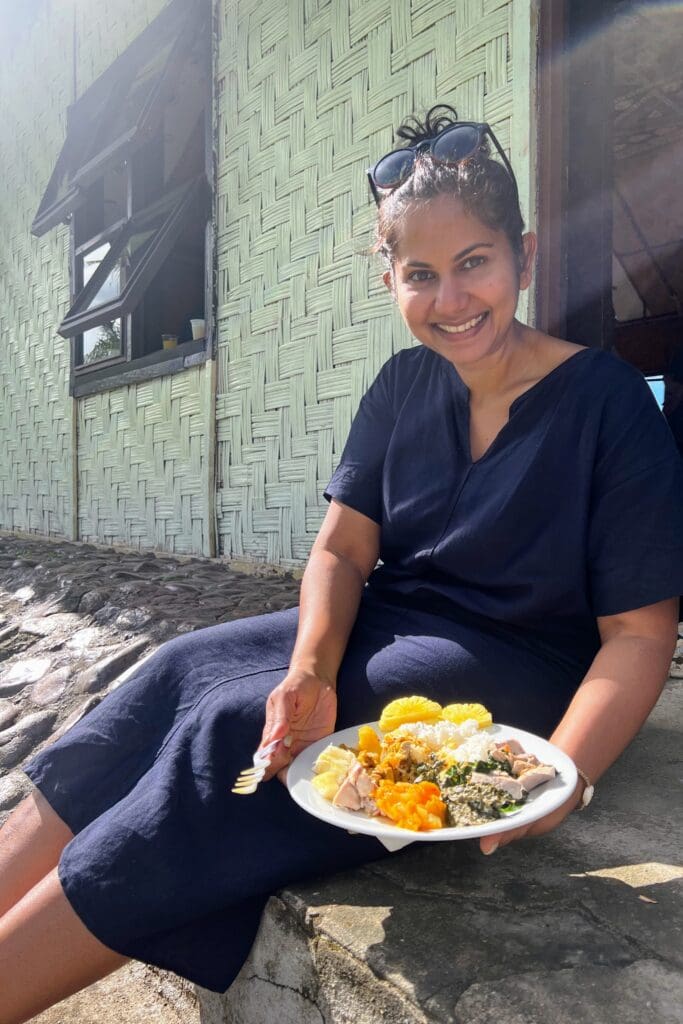
After some time, Jik and I sneaked out through the backdoor to sit on the stairs and enjoy our meal, accompanied by the beautiful view of the Navua River.
The thing I enjoyed the most, more than seeing how the Fijian Lovo was cooked and eating the delicious spread, was sharing the feast with the village. It made me feel like we were a part of them. Also, it reminded me so much of the Diwali gathering back home in Indonesia.
It truly was one of the best and most memorable meals I had in my life.
If you are in Nadi, you can also go to Nadina Authentic Fijian Restaurant by the marina and ask for the Fijian Lovo. But you ought to wait for 40 minutes. Another drawback, I think, is that it wouldn’t be even half as satisfying as it would be eaten together with the whole village. And you would be missing out on learning firsthand about this incredible Fijian cooking tradition.
Follow me on Instagram@KultureKween for more recent updates.
